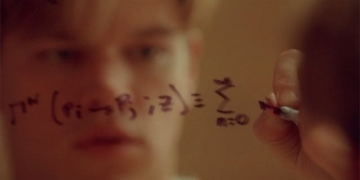According to the book “Nội Kinh,” the ancient sages lived long lives by “following the principles of heaven and earth, grasping yin and yang, breathing in vital energy, and maintaining independence of the spirit.” This is also the principle of Qigong. The “Lục Tự” (Six Syllables) is considered the only Qigong practice that combines breathing techniques with the resonance of sound.
The technique of using sound or music for healing or guiding individuals into specific psychological or spiritual states has been known since ancient times across various cultures and religions, as well as in medicine. According to the ancient Qigong concept of correspondence between humans and nature, each sound or idea corresponds to a specific type of energy both within the body and in the universe. Therefore, we can utilize resonance with appropriate intensity and duration to adjust pathological disorders or enhance the internal energy within the body.
The Lục Tự Qigong (also known as Lục Tự Quyết) is a distinctive method of Qigong that applies these principles to healing and wellness. The secret of this method lies in inhaling through the nose and exhaling through the mouth. During exhalation, one combines the breath with the recitation of the syllables. The syllables are not voiced aloud, but the mind still acknowledges them. This is a form of stillness practice. The technique does not require any movements or gestures. The breathing technique is also simple: two-phase breathing without holding the breath. However, the special combination of breathing and syllable recitation can create impulses that have a remarkable opening and purifying effect.
According to tradition, Lục Tự Qigong was researched, applied, and propagated by Xích Tùng Tử, a Taoist who practiced immortality at Mount Hua. The Lục Tự Quyết consists of six syllables: Suy, Hô, Hư, Ha, Hí, Hu. Each syllable corresponds to a specific energy or organ in the human body:
- The syllable Suy corresponds to the kidneys and bladder, related to Water energy.
- The syllable Hô corresponds to the spleen and stomach, related to Earth energy.
- The syllable Hư corresponds to the liver and gallbladder, related to Wood energy.
- The syllable Ha corresponds to the heart and small intestine, related to Fire energy.
- The syllable Hí corresponds to the lungs and large intestine, related to Metal energy.
- The syllable Hu corresponds to the pericardium and heart protector, related to Fire energy.
 Firstly, it is essential to bathe and dress comfortably, choose a quiet and airy place, free of flies and mosquitoes. Sit cross-legged or in a semi-lotus position, or sit on a chair with both feet touching the ground. Place your palms on your thighs. Slightly contract your abdomen. Relax your shoulders. Tuck your chin slightly. Keep your back straight. Close your eyes gently.
Firstly, it is essential to bathe and dress comfortably, choose a quiet and airy place, free of flies and mosquitoes. Sit cross-legged or in a semi-lotus position, or sit on a chair with both feet touching the ground. Place your palms on your thighs. Slightly contract your abdomen. Relax your shoulders. Tuck your chin slightly. Keep your back straight. Close your eyes gently.
Inhale through your nose, drawing the breath down to your lower abdomen. Simply focus on the intention that you are inhaling a stream of celestial energy from the crown of your head down to your abdomen. There is no need to worry about how the energy flows, nor should you force your inhalation to be too deep.
Exhale through your mouth. While exhaling, continuously recite a syllable. With each breath, the syllable is only voiced once and resonates until the end of the exhale. Exhale slowly, gently, and evenly while gradually tightening your abdomen. The exhalation should be longer than the inhalation. During exhalation, your lips and tongue should be positioned appropriately to produce the chosen sound; however, it should be expressed only in thought, without vocalization, so that you only feel the vibrations in your throat, audibly clear in your mind, but still silent externally. Thus, only breath escapes from your mouth. The syllable exists solely in the practitioner’s thoughts, unheard by outsiders.
At the end of the exhale, close your mouth, touch the tip of your tongue to the upper gums, and continue inhaling to your lower abdomen to begin the next breathing cycle. Each breath follows the previous one, leisurely, without being harsh or rushed.
For beginners, you can practice each syllable for about 24 breaths in a specific order from one syllable to the next. You may practice once or twice a day when your stomach is empty. In cases of healing, focus on practicing more frequently with the syllables related to the specific disorders in your body.
Focusing mental energy on the syllable during exhalation is the most crucial step in Lục Tự Quyết. Therefore, do not count your breaths aloud to avoid scattering your thoughts. You can use a hand counter with a string of 24 beads (or more) to track the number of breaths for each syllable.
The vibrations of the syllables during the practice of Lục Tự Quyết have the power to activate and open several major acupoints along the Ren and Du meridians, enhancing the exchange of energy between internal qi and heavenly qi, and increasing vital energy.
Lục Tự Qigong is an active breathing method. Deep breathing into the lower abdomen helps generate internal energy in the Dan Tian. Lengthening the exhalation promotes metabolic exchange in tissues and cells. Contracting the lower abdomen can enhance the diaphragm’s organ massage function, stimulating digestion and blood circulation.
For the nervous system, focusing the mind during the practice of Lục Tự Quyết, especially during slow and long exhalations, helps regulate the sympathetic nervous system, relieving symptoms caused by psychological stress.
Due to the process of exhaling qi, Lục Tự Qigong is considered a technique that emphasizes realism and purification. The turbid qi not only escapes externally through the mouth but also through the corresponding acupoints and meridians of the syllables and even through the limbs. Therefore, when practicing to heal conditions like tumors or fibrosis, practitioners should avoid sitting in a full lotus position to allow the turbid qi to exit easily from the legs.
The purifying effect of Lục Tự Qigong does not only originate from the meridians or organs but also develops from the energy centers in the spine, hence it is also called “tapping the marrow.” A unique feature of Lục Tự Qigong is the activation of two meridians, one ascending and one descending along both sides of the spine, thereby enhancing the ability to purify the spinal marrow.
After a period of practice, those with good energy sensitivity may perceive a flow of qi rising from the sacrum along the left groove of the spine. Upon reaching the crown, this energy will descend along the right groove of the spine back to the sacrum. Upon reaching the sacrum, this energy will automatically activate the fire of the lower dantian along the Du meridian. This phenomenon aligns with descriptions by yoga masters regarding the three main energy flows along the spine: the Ida flow carrying feminine energy on the left, the Pingala flow carrying masculine energy on the right, and the fiery serpent Kundalini ascending through the Sushumna channel in the center of the spine. For Lục Tự Qigong, this is a gradual and natural development process, and practitioners should not manipulate it arbitrarily.
When practicing Lục Tự Quyết, following the expulsion of turbid qi, a natural feedback process will occur, drawing in qi through the very acupoints and meridians that the turbid qi has been expelled from. Therefore, Lục Tự Qigong should be combined with still sitting to utilize and enhance this feedback process in drawing in heavenly and earthly qi to boost internal energy. Still sitting should follow immediately after practicing Lục Tự Quyết. The duration of still sitting is not limited but should be at least equal to the duration of practicing Lục Tự Quyết.
The still sitting mentioned here is a natural meditation method that does not require specific breathing techniques, just achieving a state of relaxation and stillness. Entering stillness leads to a process of harmony, what ancient practitioners referred to as “the union of heaven and humanity.” In terms of healing, harmony represents the balance between yin and yang and the harmony of the five organs and six bowels. This is also the self-regulating and self-recovery process of the central nervous system through the balance of the sympathetic nervous system and the interaction mechanism between the nervous system, body fluids, and internal organs. Therefore, if combined with meditation, practitioners need not worry about practicing the syllables in the wrong order or the discrepancies in the emphasis of different syllables.
One sequence for practicing Lục Tự Quyết follows the principle of generating cycles. Wood generates Fire. Fire generates Earth. Earth generates Metal. Metal generates Water. The order is Hư, Ha, Hô, Hí, Suy, Hu.




















































